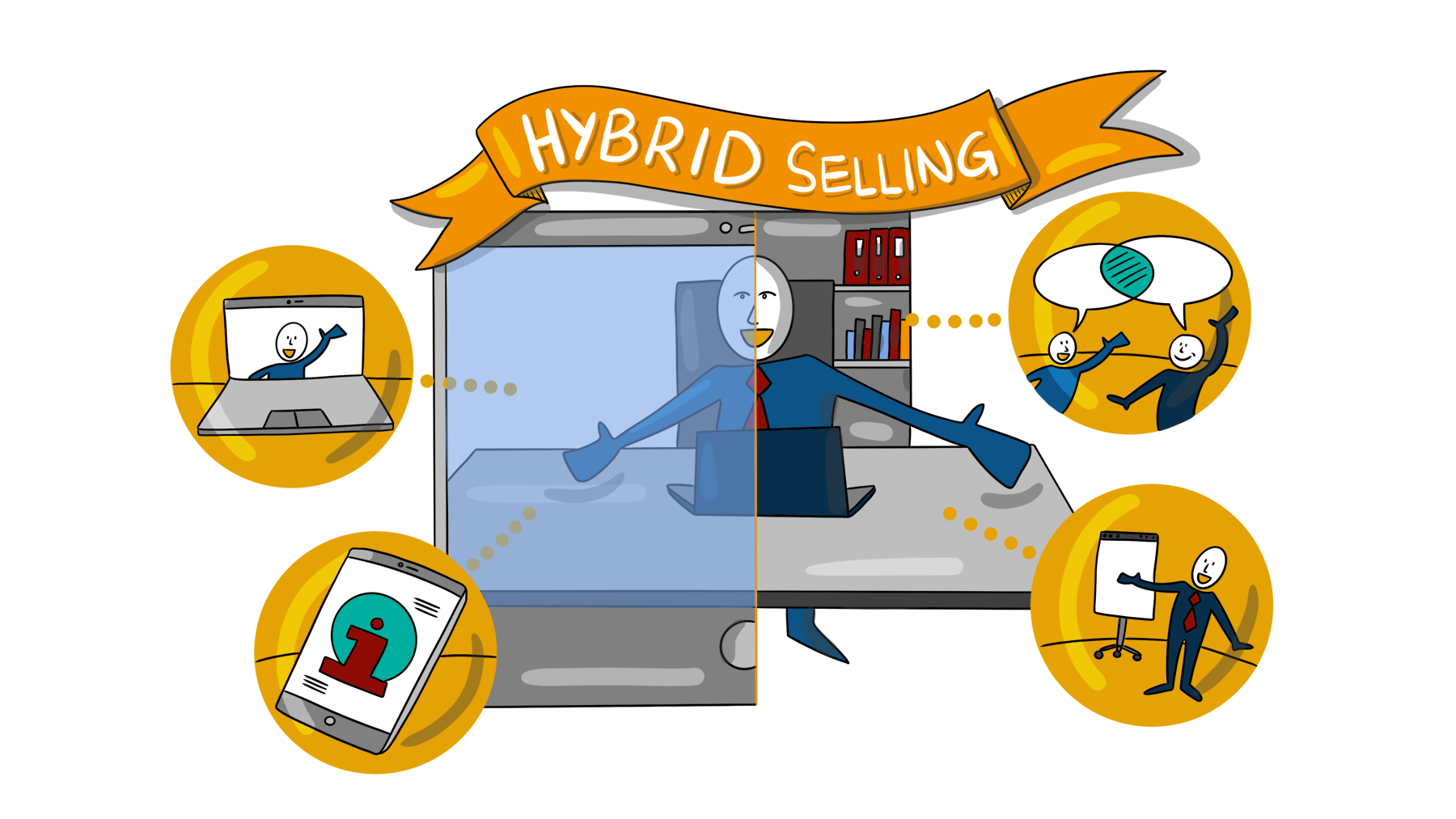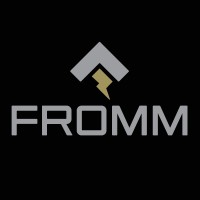The Hybrid Sales Model Can Optimize Results
 It seems that more manufacturers are seeing value in the hybrid sales deployment. Utilizing rep organizations with direct factory people in a geography is a growing trend.
It seems that more manufacturers are seeing value in the hybrid sales deployment. Utilizing rep organizations with direct factory people in a geography is a growing trend.
Allow me to give my view of its advantages and the necessary management style that may be necessary for success. The company I was active in for nearly 45 years has 25 years of experience in hybrid selling that continues today with a few of the manufacturers it represents.
Twenty-five years ago we represented Steel City, which was subsequently purchased by Thomas & Betts (ABB today). T&B decided to utilize both sales forces in a hybrid manner that enabled us to expand our footprint and capabilities. Each District Manager was responsible for making it successful and controlling their cost of sale and optimizing their return on investment. Fortunately for us, our District Manager was seasoned and had spent a good amount of time in our territories. We met and mutually discussed what was necessary to move forward believing that success would enable opportunities for all in the future. Our manager, in conjunction with the agency, developed a strategy that would enable the agency to actively pursue the distributor and construction market. The three direct salespeople would be responsible for the OEM and engineering customers. Together, with distribution, we would target specific MRO’s.
This strategy enabled both parties to leverage their expertise and the skill sets of their respective sales organizations. Essentially 1 + 1 could equal 3.
Each major distributor in the market was visited over a few to explain how this would be implemented and assured them that we would meet quarterly to review numbers, products and targets. Also at these quarterly meetings, joint sales calls and blitzes were organized with the distributor’s input as to which of their customers should be approached given the specific products that were being targeted for a specific quarter. The product introduction included samples, literature and a promotion specific to the distributor’s plan. It was not a national promotion that every distributor had access. We also provided monthly reports to both T&B and the distributor as to the specific calls made on their behalf. Transparency was key to our strategy and relationships.
We worked in geographies with our teams, and had regular reviews to discuss results. The quarterly meetings with the key distributors included everyone from our group that had responsibility for either the main store or branches. These meetings included market share comparisons and construction reports on new projects. Shipping reports reflecting how long it took to complete orders, how many shipments, 1st shipment percentages and errors were also discussed. This allowed us to update distribution on the factory’s plans for the upcoming quarter coming and their overall reporting.
Our people were trained on products in the same manner as the directs with regional meetings. All all expenses were covered by the factory (yes, this was the good old days!).
Our people enjoyed each other, and the factory direct people were invited and attended all of our social functions as part of the “family”, because they were. The directs would even bring us leads for other manufacturers we represented so that we could follow up and visit together.
As years went by and the number of direct salespeople diminished, our associates were able to step in and become the go-to contacts for all.
Our management team considered what it would cost the manufacturer to put these associates into our market. We determined a percentage that needed to be considered and added to our percentage of commissions for having them available. When a few competitors came to us asking if we would be interested in changing to them, offering larger commission rates, they were surprised at our refusal. The gross may have been truly higher, but our net at that time was better by the way we went to market.
The results of our plan resulted in significant gains in both market share and profitability that enabled us to continue forward our plan. It was also rather amusing that the VP of Sales called us and asked if reducing some of the stock pricing would gain us even more share. We decided not to follow this, but it did enable us to go after important and significant project business that our supporting distributors wanted. No need to give away margin if there is not a need.
It was apparently not as successful nationally. The district manager and I were asked to present before a manager’s meeting what our strategy was and how we involved everyone to accept it. This was followed by a request of NAED to do a similar presentation at an industry conference where the emphasis was “price is not always the issue.” There was justification to work closely with manufacturers and allow everyone to WIN.
I have spoken to many distributors, contractors, engineers and manufacturers in the local market over the last few months, thinking about this article. I asked what they thought of the hybrid model and was surprised by some of the feedback.
Few felt they are being recognized or considered and most felt the current hybrid model was merely a manufacturer’s method of cutting costs. Many remembered our example and referred to it as the best they had seen. A major contractor said when our associates came in on calls, they brought in field people as we presented so many new products, methods and knowledgeable people. The same contractor said today, people may call on us, but seldom bring worthwhile information nor do they ask questions about what is needed for his jobs, and timelines that he might need material. (Obviously this is not all reps / salespeople in the Philadelphia market as there are a number of good agencies in the area.)
One of our larger distributor’s Executive VP’s said the monthly reports and quarterly meetings were so significant that he took the leads and assigned each to his sales people requiring them to provide him feedback. He said we gave him more information than his lighting and switchgear manufacturers at the time. He also related that when we showed him new products or possible conversions to our products from others, he was seldom, if ever, uncomfortable putting them into stock knowing we would be working with his people to sell them.
This was the Philadelphia market. It is a combination of construction, industrial and residential business. Our Maryland market, which the T&B district manager was also responsible required a different strategy. Maryland was, and still is, a construction oriented market with government opportunities and engineering organizations. Our distributor model was similar with the quarterly meetings, our people were merely deployed differently. We grew the market very selectively, choosing one distributor for the industrial market, and two for the construction market. Distributors signed up for specific product categories and we were loyal to those stocking our products and did not quote any that were not. Although this was also our distributor strategy in Philadelphia, we were able to achieve numbers with fewer distributors in Maryland that had more geographic branches.
I mention these examples because the markets are different. The success of our strategy was its corporate flexibility. A “one size fits all” hybrid model would not have been as successful as the market dynamics were different. Nowadays I am frequently told by manufacturers and distributors that manufacturers are being directed by people who care only about the current quarter. Many have never been in sales or have had sales management responsibility and rarely are “in the field” listening to the customer.
A VP of a large electrical manufacturer told me he retired at 61 because he was told by his boss that he needed to lay off a specific number of people to improve margins. He told his boss that he had a record year in sales and profitability and was told “Europe is not doing well, and we need to make our corporate numbers.”
Another Regional Manufacturer for an international company told me that their strategies change depending on the year and who is directing traffic. He said, currently, they want “one face in front of the customer.” However, the product managers complain there is little training and therefore price deterioration continues without the same opportunities for new products. His retort to me is that they want to be face-to-face before the customer, they just have yet to determine who the customer is as they cannot consistently agree if this should be the end-user / contractor or the distributor.
An engineer I spoke to said he had never had more of his people attend their lunch & learns than when we did presentations. A contractor told me that when our group came in to present, he liked it either very early or late in the day because he would bring his field people in as there was always good content.
The hybrid model is NOT a method to reduce expenses, but it certainly can be a method to increase sales and profitability and provide access to multiple customer segments.
For some companies the “divide and conquer” strategy can be very effective in pursuing various segments, some of which are “long sell cycle” segments.
For other companies, a hybrid model works where sales engineers / application specialists are deployed to the field to provide technical expertise to support reps and may call on consulting engineers, architects, EPCs, large contractors, end-users, etc. This is when the manufacturer recognizes that the “cost of sale” to these audiences is cost-prohibitive for an agent (and that “product experts” can be beneficial for large opportunities.)
We are currently living in a time where selling seems less important than solving the supply chain issues. While product availability is critical, so is staying in front of customers and ensuring that tomorrow’s pipeline remains full. Manufacturer margins are up significantly due to product shortages and a reduced need to discount, but how long will this last? A year or longer, possibly. And what happens when smaller companies with inventory seek to compete on price? Sales will become a factor again and if we neglect them today, will they be “loyal” later? Will we have to re-earn their business?
I believe the hybrid model checks every positive box if done correctly and sales managers are again allowed to have more say in the sales strategy. Let Channel Marketing Group assist in developing a sales model for now and the future by analyzing the perceptions and realities of your company for future growth and profitability.
Not all sales transformation needs to be digital. Different models can generate different performance.




















